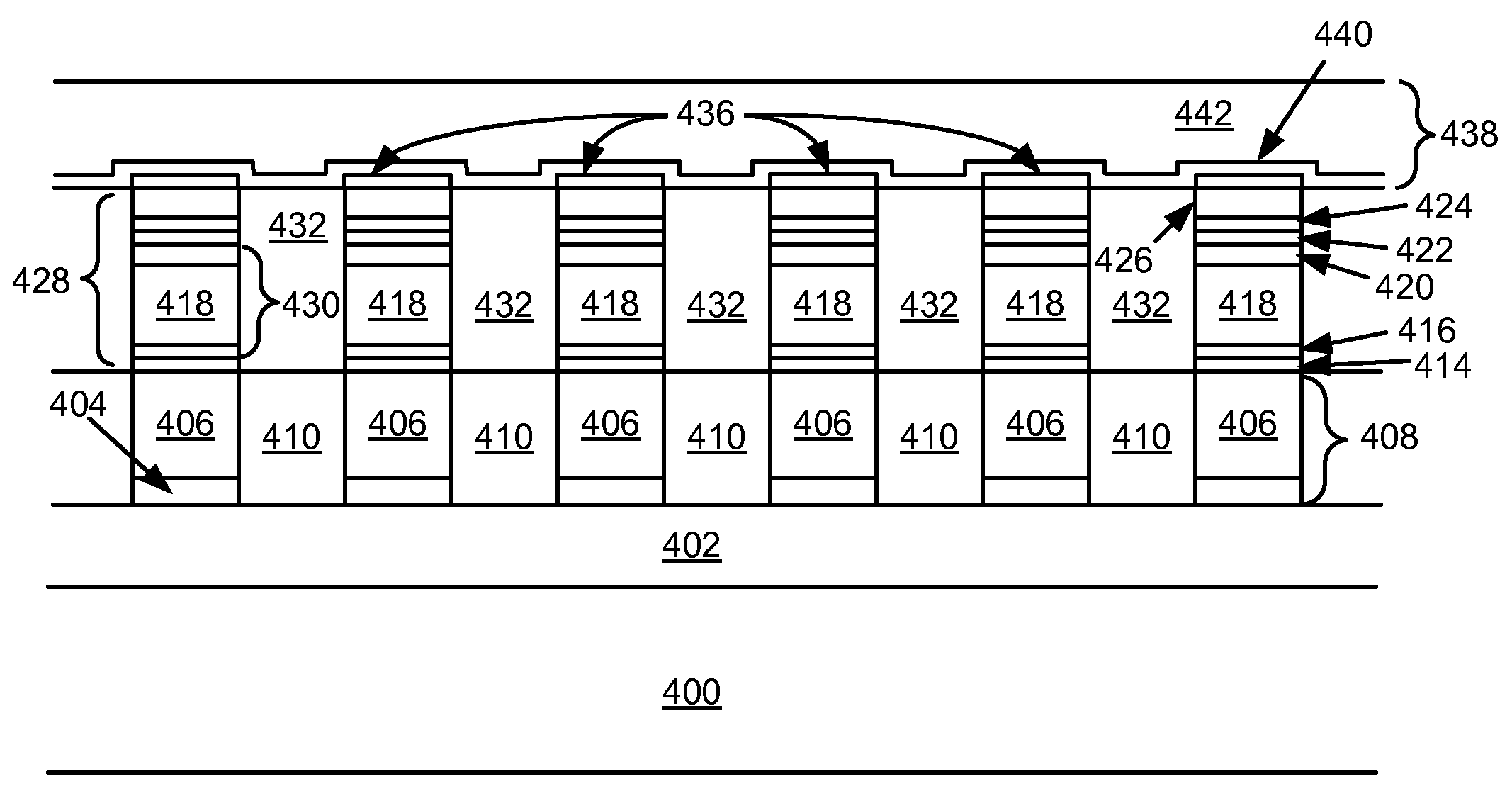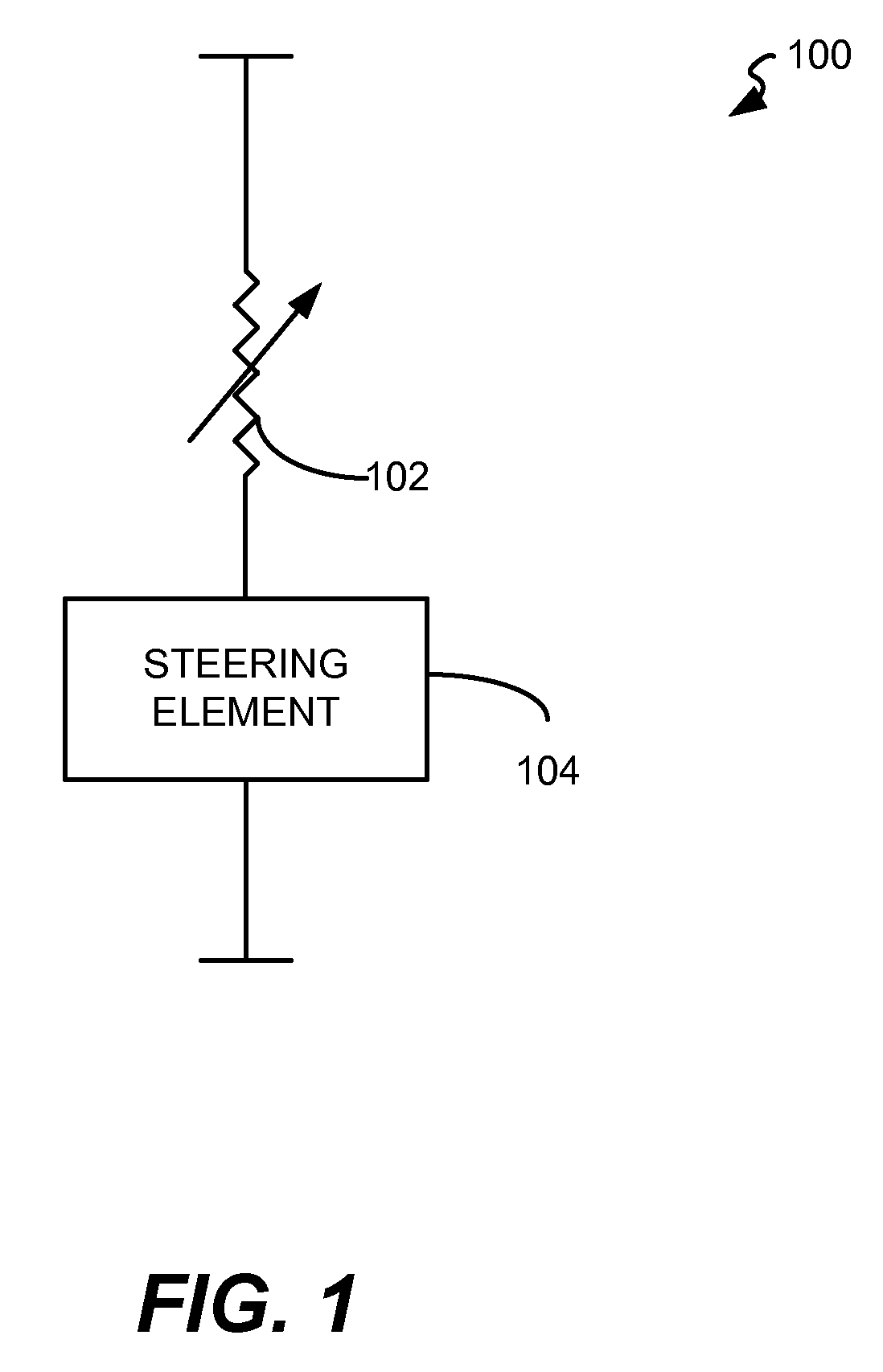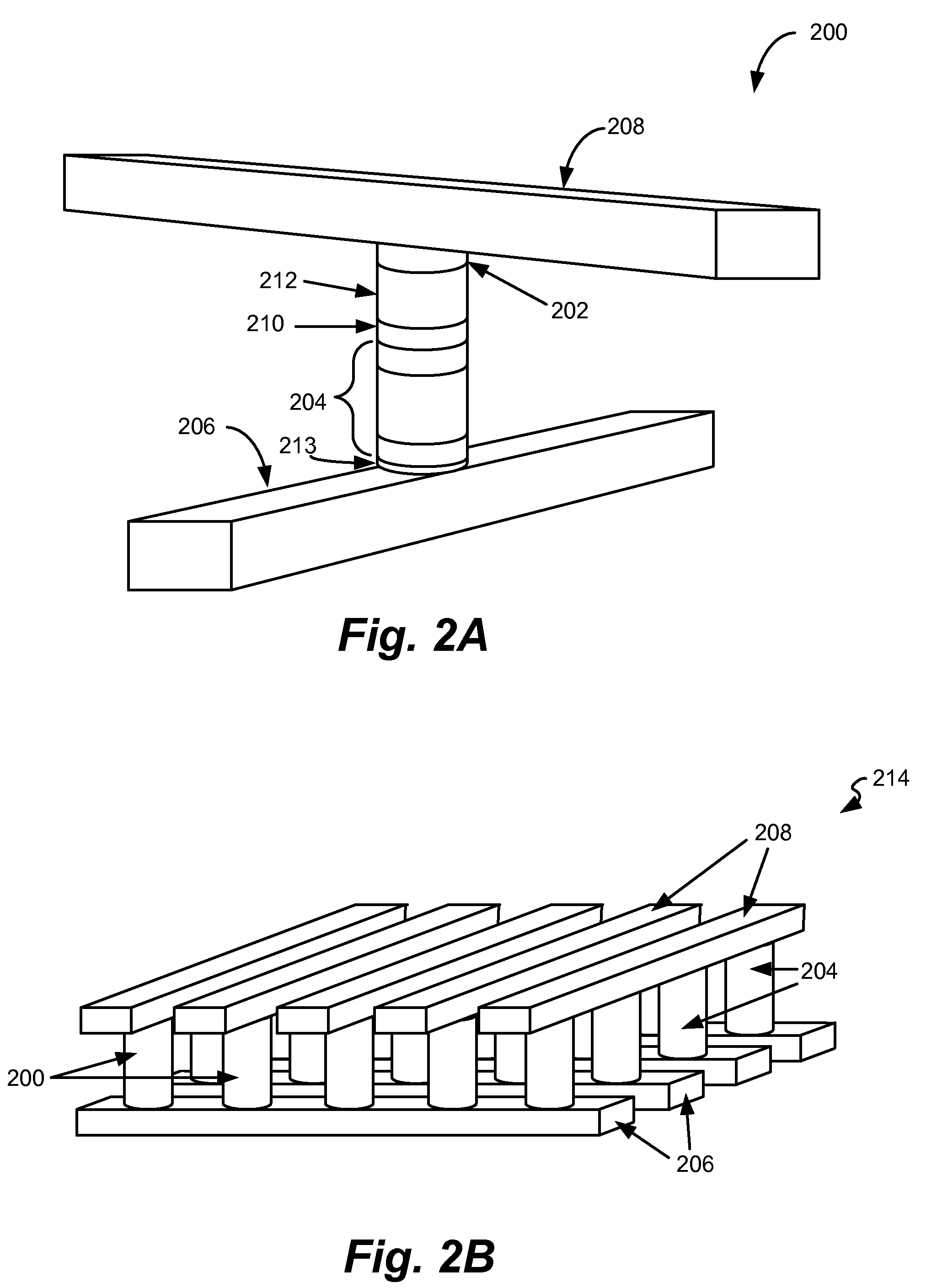Memory cell that employs a selectively deposited reversible resistance-switching element and methods of forming the same
a memory cell and reversible resistance technology, applied in the field of nonvolatile memories, can solve the problems of difficult fabrication of memory devices from rewriteable resistivity-switching materials
- Summary
- Abstract
- Description
- Claims
- Application Information
AI Technical Summary
Benefits of technology
Problems solved by technology
Method used
Image
Examples
first exemplary embodiment
OF A MEMORY CELL
[0039]FIG. 2A is a simplified perspective view of a first embodiment of a memory cell 200 provided in accordance with the present invention. With reference to FIG. 2A, the memory cell 200 includes a reversible resistance-switching element 202 coupled in series with a diode 204 between a first conductor 206 and a second conductor 208. In some embodiments, a barrier layer 210 and / or a conductive layer 212 may be formed between the reversible resistance-switching element 202 and the diode 204. For example, the barrier layer 210 may include titanium nitride, tantalum nitride, tungsten nitride, etc., and the conductive layer 212 may include tungsten or another suitable metal layer. As will be described further below, the barrier layer210 and / or conductive layer 212 may serve as a hard mask during formation of the diode 204. Such a hard mask is described, for example, in U.S. patent application Ser. No. 11 / 444,936, filed May 13, 2006 and titled “CONDUCTIVE HARD MASK TO PRO...
PUM
 Login to View More
Login to View More Abstract
Description
Claims
Application Information
 Login to View More
Login to View More - R&D
- Intellectual Property
- Life Sciences
- Materials
- Tech Scout
- Unparalleled Data Quality
- Higher Quality Content
- 60% Fewer Hallucinations
Browse by: Latest US Patents, China's latest patents, Technical Efficacy Thesaurus, Application Domain, Technology Topic, Popular Technical Reports.
© 2025 PatSnap. All rights reserved.Legal|Privacy policy|Modern Slavery Act Transparency Statement|Sitemap|About US| Contact US: help@patsnap.com



